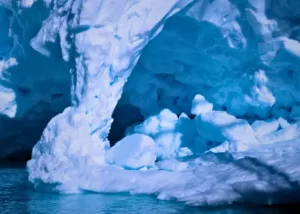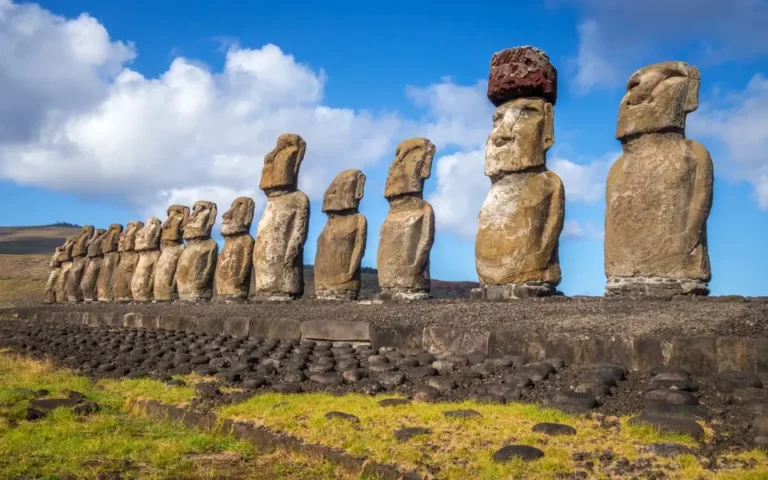The World Underneath Antarctica: Latest Scientific Discovery

Antarctica has always been a place of intrigue and wonder. It is the coldest, driest, and windiest continent on Earth, with a harsh environment inhospitable to human life. Despite its extreme conditions, Antarctica is an area of great interest to scientists, explorers, and adventurers. One of the fascinating mysteries surrounding Antarctica is of another world underneath Antarctica ice.
Scientists have long speculated that vast sub glacial lakes, rivers, and even entire ecosystems may be beneath the ice.
Antarctica’s ice sheet is up to 4 km thick in some places, making it challenging to study what lies beneath. Yet, technological advances have made it possible to explore these hidden worlds. Over the years, various expeditions and scientific studies have been conducted to investigate:
What is hidden under the ice of Antarctica?
Some of the most exciting discoveries in recent years include the sub glacial Lake Vostok. It is believed to have been isolated from the rest of the world for over 15 million years. This discovery has opened up the possibility of finding new forms of life and understanding the history of the Earth’s climate.
Another fascinating aspect of Antarctica is its role in global climate change. The melting of Antarctica’s ice sheet has the potential to cause sea levels to rise and alter weather patterns around the world.
In conclusion, Antarctica’s mysteries and secrets are vast and intriguing. The possibility of another world underneath its ice has captivated scientists and explorers for years. Discoveries continue to be made. So let’s dive into this topic.
The Quest for Discovering World Underneath Antarctica Ice

The quest to discover what lies beneath Antarctica’s ice has been long and challenging. For decades, scientists have known that subglacial lakes and rivers are hidden beneath the ice sheet. It was in the 1970s that scientists began using radar to study the ice sheet’s internal structure and reveal the hidden landscape beneath.
Since then, new techniques have been developed to study what lies beneath Antarctica’s ice. For example, ground-penetrating radar (GPR) is now used to investigate the sub glacial landscape. GPR uses electromagnetic waves to penetrate the ice and image the landscape below.
The quest to discover what lies beneath Antarctica’s ice has also involved drilling deep into the ice to reach the sub glacial lakes. In the 1990s, Russian scientists drilled into sub glacial Lake Vostok and collected water samples from the lake. This breakthrough discovery opened up new possibilities for finding life in extreme environments.
Another technique used to study sub glacial environments is remotely operated vehicles (ROVs). ROVs are unmanned submersibles that can be controlled from the surface and equipped with cameras and other sensors to study the sub glacial environment.
In recent years, drones have also become essential for exploring and studying Antarctica. Drones can collect data and imagery from areas inaccessible or too dangerous for humans to access.
Despite these technological advances, Antarctica’s extreme conditions make studying what lies beneath the ice challenging. The harsh weather, extreme cold, and isolation make operating in the area challenging for scientists and equipment. Moreover, the delicate ecosystem beneath the ice is highly susceptible to contamination from drilling or other activities. All these made it essential to minimize the impact of any scientific activity.
The Discovery of Lake Vostok: A Significant Breakthrough

Lake Vostok is one of the largest sub glacial lakes in Antarctica. It is located beneath the East Antarctic ice sheet. The lake was discovered in the early 1990s through remote sensing techniques and ground-penetrating radar. It was named after the nearby Vostok Station, a Russian research station.
The lake is thought to have been isolated from the surface for millions of years, making it a unique ecosystem that could contain ancient life forms.
In 1998, Russian scientists drilled into the ice above Lake Vostok and collected water samples from the lake. The samples contained microorganisms, proving that life could exist in extreme environments.
Several other sub glacial lakes have been discovered in Antarctica using similar techniques. These include Lake Ellsworth, Lake Whillans, and Lake Mercer. These lakes are also considered isolated from the surface and could contain unique ecosystems and potentially undiscovered life forms.
What Lies Ahead: Future Prospects for Antarctic Exploration

One area of focus for future exploration is the study of climate change. Scientists are using a variety of techniques, including:
- satellite imagery
- ground-based measurements
- computer modeling
To study changes in the ice sheets and their potential impact on the global climate.
Another area of focus for future exploration is the study of sub glacial lakes using remote sensing techniques, robotic vehicles, and drilling technologies.
In conclusion, there are many exciting prospects for future exploration of Antarctica. Exploration is essential for understanding our planet and the impact that humans are having on it.
It’s not the only time that humans have uncovered mysterious places like Antarctic. From the fabled city of Cibola to the first city of the ancient world, Uruk, there are many instances of historical discoveries that have captivated our imaginations, you can read here:






